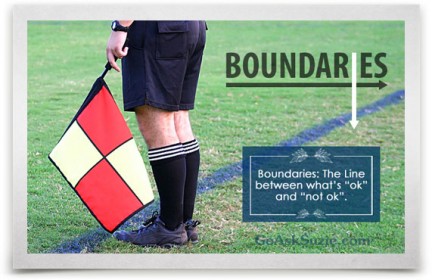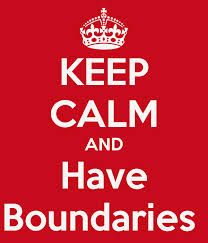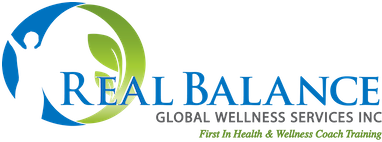Healthy Boundaries For Health & Wellness Coaches: Part Two
In our last post we featured Part One on this topic:
A New Code of Ethics For Health & Wellness Coaches: Healthy Boundaries Part One http://wp.me/pUi2y-kb There we introduced the new NCCHWC Code (National Consortium for Credentialing Health and Wellness Coaches) and began the discussion of boundaries with a look at ethics, appropriate relationships, touch and self-disclosure. We talked about the establishment of a trusting environment and how coaches show respect for boundaries by asking permission to explore sensitive areas. In this blog we’ll take a deeper dive into some specific areas where coaches often have questions about how to proceed.
Pushing The Edge
In health and wellness coaching boundaries can be pushed by either the coach or the client. When is a client asking for too much? When is a coach straying either beyond their Scope of Practice (see NCCHWC website: http://www.ncchwc.org/wp-content/uploads/2015/03/Final-NCCHWC-Health-Coach-Scope-of-Practice.pdf) or enters territory that simply feels uncomfortable for either party, or both?

Client-Generated Boundary Crossings
- Asking for reminders, contact beyond appointments, services not in the contract and personal inquiry.
When clients co-create with their coach agreements about action steps and accountability they frequently begin by asking for the coach to remind them to perform that action step. This is not an outrageous request and one that some coaches are okay with. What works better, however, and is much less of a burden on the coach, is for the client to agree to contact the coach (via email, text) to let them know when they did, in fact, perform the action step. This keeps the client more responsible and allows the coach to avoid falling into the role of nag or authority. Coaches should always agree only to what they are willing to do when setting accountability agreements.
Clients may also ask for additional contact beyond the agreed upon appointments. This request can arise out of a variety of intentions. Clients may desire more of a friendship relationship instead of a professional coaching relationship. This could even have romantic intentions. This is where using direct communication is a coaching skill that can pay off. The coach should gently inquire about the client’s intention in making such a request. This brings things out into the open and can lead to a helpful coaching conversation about where else in the client’s life they could get such needs met. The coach can gently, but firmly explain the advantage for the client in keeping the coaching relationship on a professional level.
I once trained a coach who had gotten into a coaching relationship where she would come to the client’s house, wake her up at 6:00 am and go jogging with her as part of the coaching service. I asked if their agreement was for coaching or for services as a personal assistant! There is quite a difference to say the least. Stick to coaching! When clients make excessive requests, explain the roles of a coach and explore how else the client might get these other needs met.
The other area coaches are often unclear about is how much to disclose about their own personal lives. We address self-disclosure in coaching very thoroughly in my previous blog post: “Self-Disclosure in Coaching – When Sharing Helps and Hinders” (http://wp.me/pUi2y-8m). To quote from that post: “Coaches choose to share certain biographical information with their clients to help build the coaching alliance. The coach who comes across as secretive about whether they have ever had children, are in a relationship with a partner, etc., is going to be trusted less. The challenge here is to maintain good professional boundaries while also being willing to relate to the client as an ally, an authentic human being, not an impersonal and distant professional.”
 Coach-Generated Boundary Crossings
Coach-Generated Boundary Crossings
- Going Beyond Competency – Beyond Scope of Practice
In Part One on this topic we addressed professional scope of practice. (See NCCHWC Health & Wellness Coach Scope of Practice http://www.ncchwc.org/wp-content/uploads/2015/03/Final-NCCHWC-Health-Coach-Scope-of-Practice.pdf You can also find copies of both the Code of Ethics and the Scope of Practice in the Wellness Resources section of the Real Balance website (https://www.realbalance.com/wellness-resources)
Looking more closely at what happens at times in coaching, we see that the edge that is pushed here is often done subtly and usually without intent to go beyond coaching. The number one concern I hear about in training coaches is the distinction between coaching and therapy. Again, look to the Wellness Resources section of the Real Balance website listed above for a copy of the definitive article on this subject by Meg Jordan and John Livingstone “Coaching versus Psychotherapy in Health and Wellness: Overlap, Dissimilarities and the Potential for Collaboration.”
What I observe more frequently is when coaches pursue a line of inquiry into a client’s psycho-emotional history, into their family of origin issues, etc., and sometimes do so based upon methods and techniques that they have read about in various self-help books. Without a mental-health professional background, even attending a workshop with a famous self-help author does not prepare a coach to do such work. Such inquiries usually do not develop into dire mistakes, but do have the potential to urge the client to go somewhere emotionally that they and the coach are not prepared for. The number one brake here is for the coach to catch themselves when they realize they are engaging in this line of inquiry more out of their own curiosity/fascination instead of a solid coaching rational. When clients push to pursue this inquiry it’s time for the coach to state their own lack of qualifications to go there and to suggest how the client could be better served by speaking with a counselor, therapist, etc.
 Going beyond one’s competency can also occur outside of the mental/emotional dimension of wellness. It’s so easy for a coach to blur the line between providing some helpful wellness/health education and being more directive. Coaches should refrain from recommending, imploring, strongly suggesting, or arguing for the benefits of a particular course of action (such as a specific diet, exercise plan, or any form of conventional or non-conventional type of treatment) if they are not qualified to do so as a licensed professional in that field. The coach who can “wear two hats” can offer the wisdom of that other profession that they are part of when they clearly inform their client that they are doing so. This step “over the edge” can occur easily when the coach is not aware of how they are pushing their own agenda for change.
Going beyond one’s competency can also occur outside of the mental/emotional dimension of wellness. It’s so easy for a coach to blur the line between providing some helpful wellness/health education and being more directive. Coaches should refrain from recommending, imploring, strongly suggesting, or arguing for the benefits of a particular course of action (such as a specific diet, exercise plan, or any form of conventional or non-conventional type of treatment) if they are not qualified to do so as a licensed professional in that field. The coach who can “wear two hats” can offer the wisdom of that other profession that they are part of when they clearly inform their client that they are doing so. This step “over the edge” can occur easily when the coach is not aware of how they are pushing their own agenda for change.
- The Coach Acts Out Of Their Own Needs

A boundary is crossed when the coach is no longer acting with the good of the client remaining primary. Coaches are fallible human beings like everyone else. Unmet interpersonal needs for intimacy, whether sexual, romantic, or simply the desire for closeness, can influence the coach’s actions at levels that require keen awareness to detect. Part of being a health and wellness coach is living a wellness lifestyle and that means acknowledging one’s needs and seeking healthy ways to get them met. Unmet needs for power and control, for self-worth through showing competency can also be expressed by coaches at an unhealthy level that once again causes the coach to no longer be acting with the wellbeing of their client as primary.
Coaches can also put their own needs first on the financial front. The coach who is facing severe financial stress may consciously or unconsciously strive to create more dependence in the coaching relationship instead of fostering independence in their client. Coaches who also sell wellness products, such as supplements, etc., may pressure clients to make purchases (a clear violation of the Code of Ethics).
- Social Media Boundaries
Clients sometimes actually brag about having a coach and are proud to tell the world about the wonderful services that Coach X is providing for them. Coaches however must respect their client’s confidentiality and not identify any client on Social Media (Facebook, Twitter, etc.). It is also not a good idea to “friend” clients on Social Media. Clients can share information using more private methods of communication than a Social Media format that provides no privacy.

Organization-Generated Boundary Crossings
- Violating Client’s Right To Confidentiality
Most organizations are careful to avoid violating the privacy of their employees but this can happen when coaches working within an organization are asked to give specific reports on their clients. HIPPA regulations (https://www.hhs.gov/hipaa/index.html) protect the health information of a client. The request for information about “how a client is doing” may come innocently enough out of genuine concern for the client. Still, this request should be met with a recommendation that the person inquiring ask the client directly.
- Requiring Internal Coaches To Push Sales
An organization may require the coaches that work for them to promote the sales of products or services within the context of the coaching. While this may be framed as a low-pressure offering that clients can easily decline, it is potentially an exploitation of the unique trusting relationship that the coaching process develops.
- Requiring Internal Coaches To See Too Many Clients
Another boundary is that of setting healthy expectations/requirements for the number of clients a coach can see in one hour and in one work day. Some disease management and other large coaching services make excessive demands of their coaches in terms of quantity of clients seen, lack of break times, and lack of times to do coach notes, etc. The result is both a health risk for the coach and inevitably a diminishment of quality of services for the clients.
Organizations and coaches share in the responsibility and potential liability of working with the people they serve. They must always act with the good of the client (and the coach) – their health and wellbeing – as foremost in all policies and procedures.
Coaches also need to think about how they may at times be putting themselves at risk. One example would be if a coach meets a client in a building where they are the only occupants, or especially if the coach opened a locked building to meet with the client there.

Healthy Self-Generated Boundaries
- Knowing And Abiding By Your Own Limits & Boundaries
Perhaps the most rewarding benefit of Healthy Boundaries is the self-care that they provide for the coach themselves. We benefit from all of the healthy boundaries described above, but we also need to reflect on the boundaries that we need to set for our own mental, emotional and spiritual health and wellbeing. Sometimes coaches work in settings where excessive demands are made of them as we noted above. Independent coaches however, need to set their own limits and achieve healthy boundaries in order to preserve their own wellness and continue provide the highest quality services. Part of the self-employed challenge here is having enough confidence in your own ability to create a successful business that will support you to allow you to invest in the time it takes for self-care and personal and professional renewal.
Boundaries are there for good reasons. Just like a football game or match would become chaotic without those “out-of-bounds” markers, professional and personal relationships thrive on clear and healthy boundaries.








Only registered and logged in readers can leave comments.